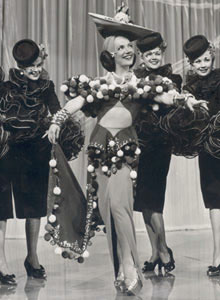This article's lead section may be too short to adequately summarize the key points.(September 2010) |

A fruit hat is a festive and colorful hat type popularized by Carmen Miranda and associated with tropical locales. This type of hat has been worn by fashionistas, in films, by comic strip characters, and for Halloween. The fruit used tends to sit on the top or around the head, and varies in type, e.g. bananas, berries, cherries, pineapples.
